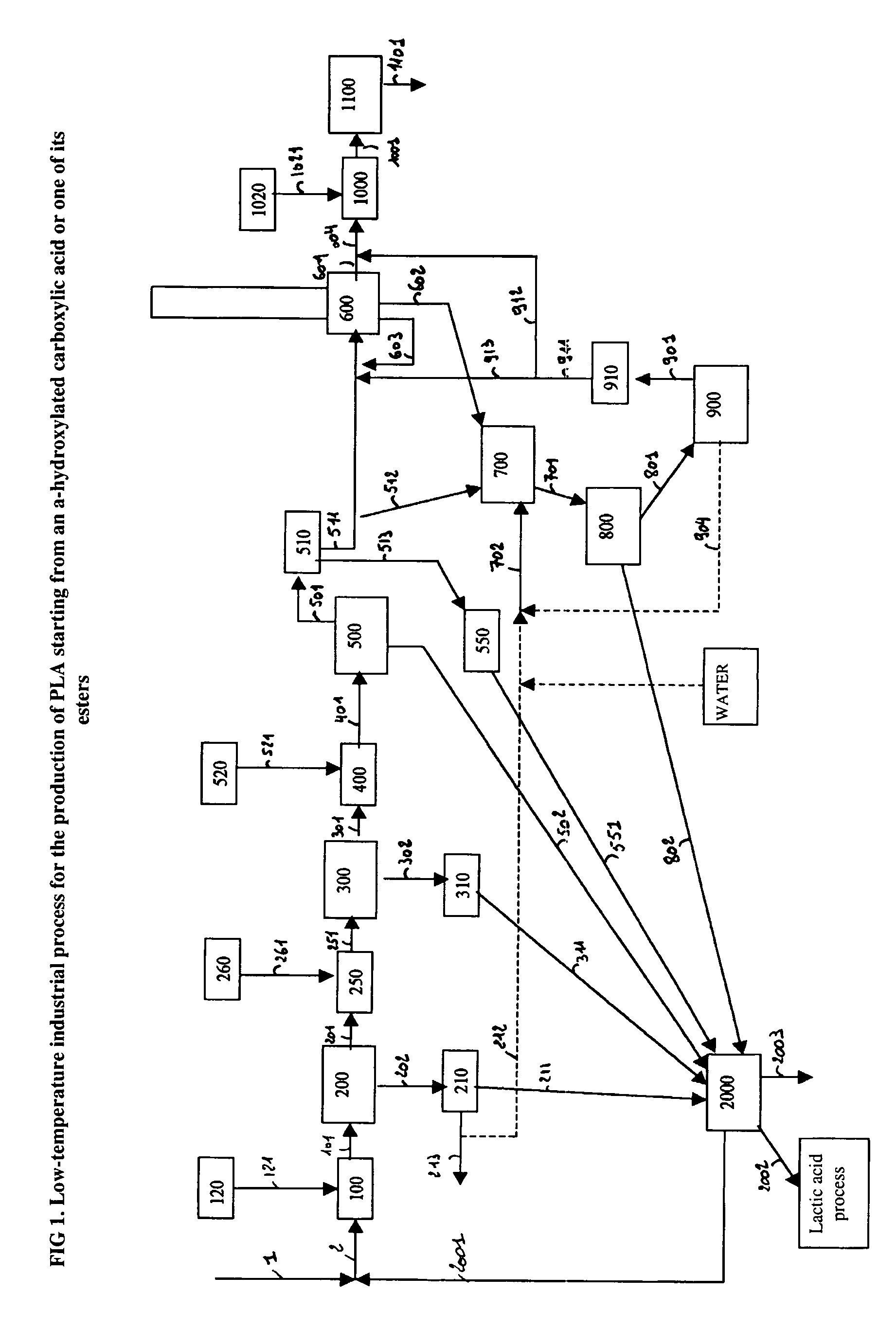Method for the production of polyactide from a solution of lactic acid or one of the derivatives thereof
a technology of lactic acid and polyactide, which is applied in the direction of organic chemistry, etc., can solve the problems of preventing economically profitable operation of the process, affecting and reducing so as to reduce the overall yield of the process, the effect of reducing the stability of the stream
- Summary
- Abstract
- Description
- Claims
- Application Information
AI Technical Summary
Benefits of technology
Problems solved by technology
Method used
Image
Examples
examples
a) This Example Illustrates the Importance of the Recycling of the By-Products from the Synthesis of the Lactide in the Plant for the Purification of the Lactic Acid and not in the Oligomerization Stage
[0152]A stock of lactic acid oligomers was fed to a depolymerization unit at an interval of one month in order to confirm or invalidate the constancy of the results and thus the possibility of recycling the D-lactic units directly in the process of the synthesis of the lactide.
[0153]During the storage period, the oligomer was kept fluid in a closed chamber with stirring and at a temperature of 140° C.
[0154]For the depolymerization, the oligomer is mixed with 2% of its weight of tin octoate and fed (25-30 kg / h) to a thin film evaporator maintained at 235° C. and with a surface area of 2 m2. The vapor generated (impure lactide, crude product) is condensed and the product obtained weighed in order to determine the productive output of the system but also analysed in order to determine th...
PUM
| Property | Measurement | Unit |
|---|---|---|
| optical purity | aaaaa | aaaaa |
| optical purity | aaaaa | aaaaa |
| temperature | aaaaa | aaaaa |
Abstract
Description
Claims
Application Information
 Login to View More
Login to View More - R&D
- Intellectual Property
- Life Sciences
- Materials
- Tech Scout
- Unparalleled Data Quality
- Higher Quality Content
- 60% Fewer Hallucinations
Browse by: Latest US Patents, China's latest patents, Technical Efficacy Thesaurus, Application Domain, Technology Topic, Popular Technical Reports.
© 2025 PatSnap. All rights reserved.Legal|Privacy policy|Modern Slavery Act Transparency Statement|Sitemap|About US| Contact US: help@patsnap.com


